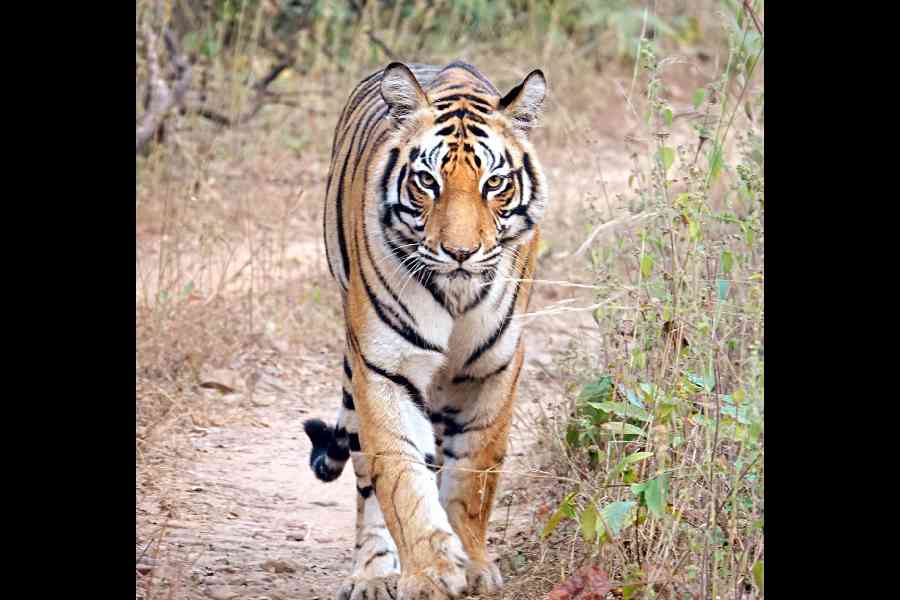Wanderlust and highway dust. A heady combination. Pining for a road trip and unable to break free from a hectic work schedule, my chance finally came mid-November last year, and I escaped for 10 whole days to explore and discover — and find joy in driving for hours on end on the highway.
At the risk of sounding clichéd, let me say that India is indeed incredible and nowhere is this more apparent than when you travel by road. The diversity of the nation is amazing. Like a kaleidoscope, the topography changes, the settlements look different as do the local people with their apparel and appearance and dialects. Stop at a haunt for food or the ubiquitous tea stall, and you will find even that different as you burn the gas. Yet, there is a mysterious thread of commonality that binds us all and you never feel like an alien.
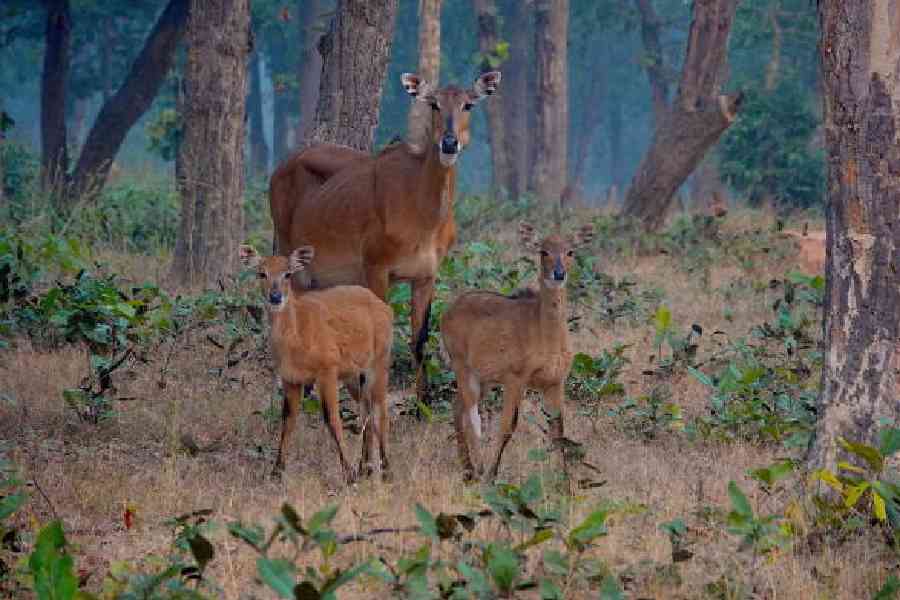
A trio of swamp deer posing for the camera
A ghat called Ghatshila
Our trip started from Calcutta, and I drove to Ghatshila — a beautiful little town in Jharkhand on the banks of the Subarnarekha. Ghatshila was once a home away from home for many well-to-do Bengali families who went there “for a change of air”. About 240km from Calcutta, Ghatshila is worth visiting. It was the home of acclaimed Bengali writer, Bibhutibhusan Bandyopadhyay whose works include Pather Panchali, Aparajito and my personal favourite, Chander Pahar. It was the last one that inspired me to explore the wilderness at a young age.
Gullies of Varanasi
From Ghatshila, we drove to Varanasi, a place that never fails to enthral visitors, for reasons religious or otherwise. We halted at Varanasi for the night and sampled delectable chaat in Vishwanath Gali, a thriving hub for street shopping in Varanasi. To be in this ancient Indian city — the spiritual capital of the nation — is a deeply personal experience for everyone who comes here but I recommend that you must sample the snacks and sweets here. Varanasi is 680km from Calcutta. We took a day to drive along NH-19 from Calcutta and reached by nighttime.
The traveller and the road
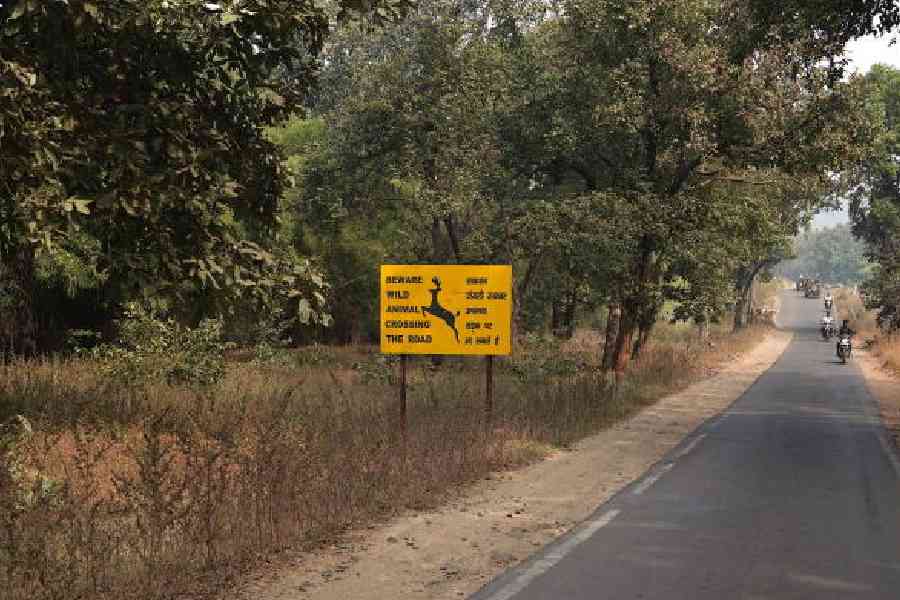
A thrilling ride through forest road from Sanjay Dubri to Bandhavgarh
A word here about the roads in India. I have driven along some of the most amazing highways across the world, and can confidently declare that road conditions in our country are comparable to the best. So, if you are thinking of setting off on your bike or in your car for that ultimate road trip, the time is now.
From Varanasi, we were off to Sanjay Dubri National Park and Tiger Reserve in Madhya Pradesh. Along NH-135, it is roughly 250km and takes a little over four hours. Since this was November, we couldn’t have wished for better weather. Driving through the scenic route with the Vindhya and Satpura ranges by the side is a thrilling experience by itself. If you are a child of the 1970s or have devoured action films of the generation, you might half-expect a band of outlaws to jump out of a ravine and ambush you!
Wilderness at last
Sanjay Dubri National Park and Tiger Reserve is a place after my own heart. This is a paradise in central India that few have discovered so far. I keep coming back because it is peace personified.
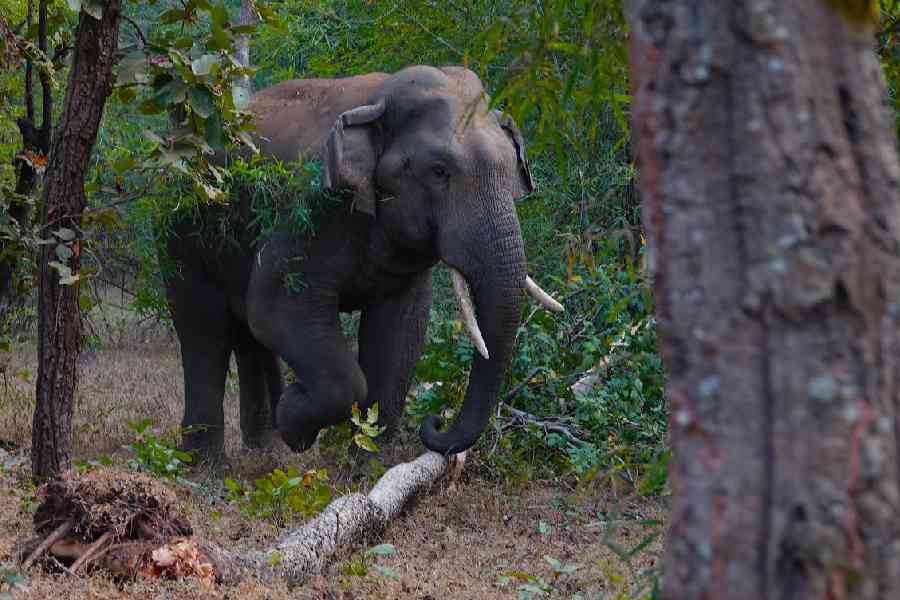
Bandhavgarh is home to 60-70 elephants
At Sanjay Dubri, we set anchor and stayed for four days, taking in the peace of the isolated wilderness, exploring the wild population of carnivores, ungulates, primates, birds, and recalibrating ourselves internally. Here lies the true wealth of Madhya Pradesh, and if you don’t hurry, this gem of a place may soon be discovered and overrun by enthusiastic tourists.
My friend, the tiger
It was early in the morning when we started hearing the roar of two tigers and we camped in our vehicle for an hour. And then came the majestic creature. To my surprise, the tiger started stalking a safari vehicle till the time another vehicle came from behind and then the tiger almost started posing for all of us. We were lucky to have sighted tigers in most of our eight safaris in photographic conditions.
It has always been on my wishlist to drive my own vehicle and do some off-roading inside a forest, and this time, our guide Raj took us to a territorial forest where we went on a safari for almost an entire day driving our own vehicle. Though we were not lucky enough to sight any animal, it was an experience of a lifetime.
From Sanjay Dubri, we drove towards Bandhavgarh Tiger Reserve, completing our morning safari and we were at the White Tiger Lodge by the afternoon. The bountiful forests of Bandhavgarh were once inhabited by a race of people who called themselves Baghels, meaning ‘tigers’ and the area came to be known as ‘Baghelkhandor’ or the land of tigers. The region is dotted with streams, small seasonal rivers, and waterbodies that become natural habitat for a mind-boggling array of wildlife.

A curious crested serpent eagle
An exotic combination of the natural elements of water, deeply forested vegetation, and rock formations, Bandhavgarh ranks high on the list of tiger enthusiasts in the country alongside Corbett and Ranthambore.
We were in Bandhavgarh for four nights as well. I have been here several times before and keep returning to refill myself with the forest’s sights and sounds. It is sadly getting overrun by too many visitors.
At both Sanjay Dubri and Bandhavgarh, the tiger did not disappoint us with sightings. After filling our hearts and souls with the diversity of plant and animal life at Bandhavgarh, we started on our journey back to Calcutta, bookending the journey with a brief stop at Bodh Gaya, another immensely spiritual centre, particularly for Buddhists.
It turned out to be a road trip of approximately 2,500km across five Indian states, stopping and staying at five destinations and passing through innumerable villages along the way.
An aside for travellers
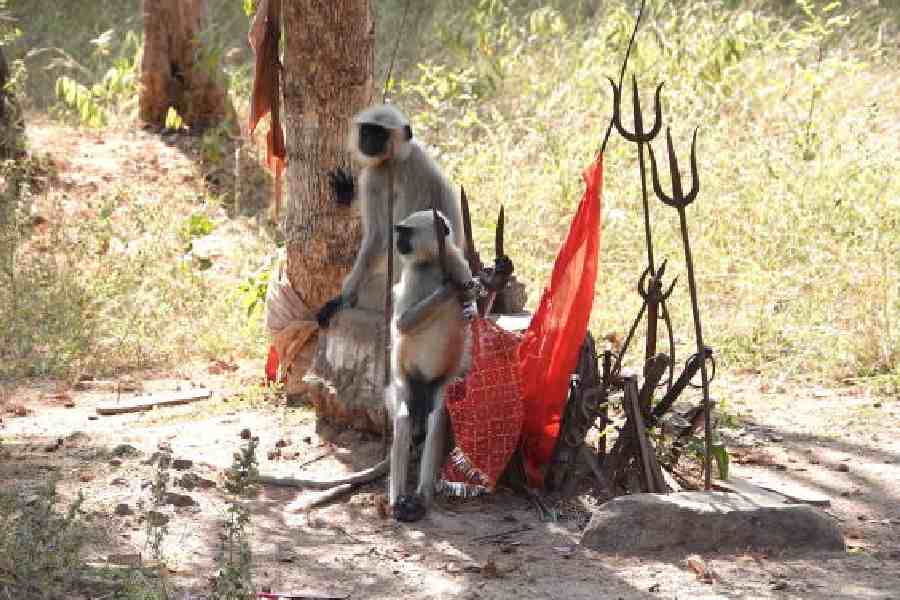
An interesting sighting of the Indian Langur enroute Sanjay Dubri from Varanasi near Hanumana
Varanasi is 680km from Calcutta and takes about 12 hours to reach; Sanjay Dubri is 255km from Varanasi and a picturesque drive that takes about four-and-a-half hours. Bandhavgarh is 90km from Sanjay Dubri and takes about two hours.
Shiladitya Chaudhury is a communication consultant and restaurateur. He co-owns popular brands Oudh 1590 and Chapter 2. His passion for wildlife photography takes him to the remotest of jungles. All photographs were shot on Sony RX 10 Mark 4.

